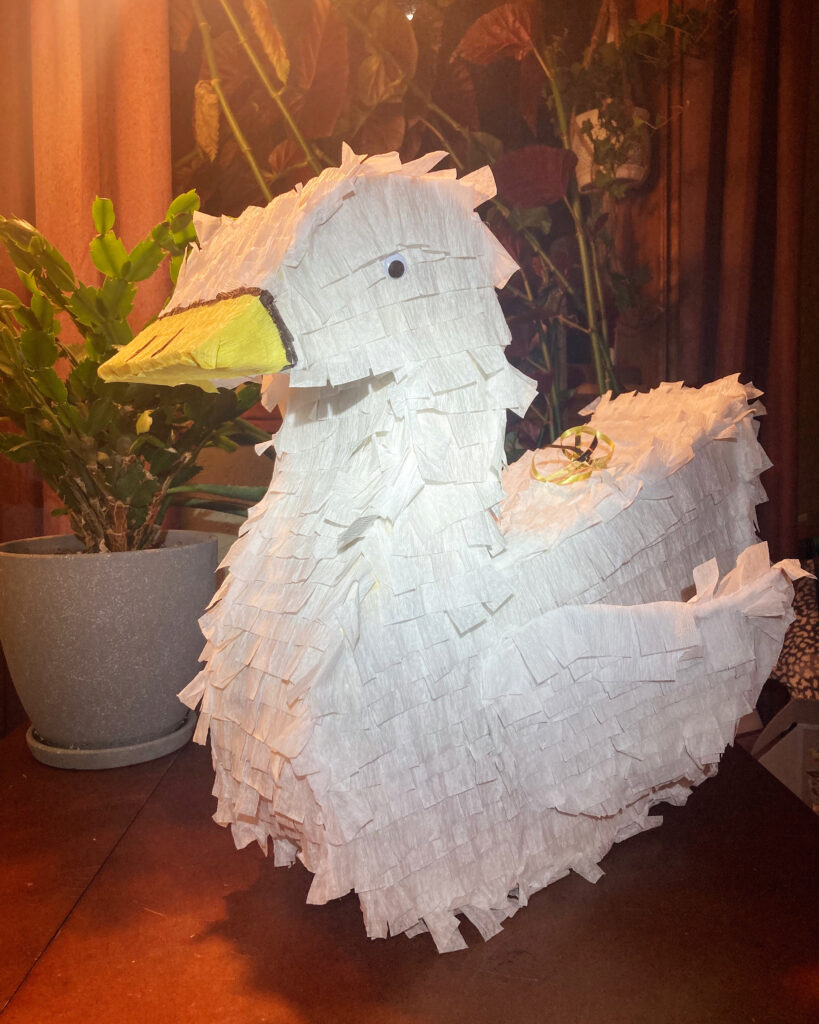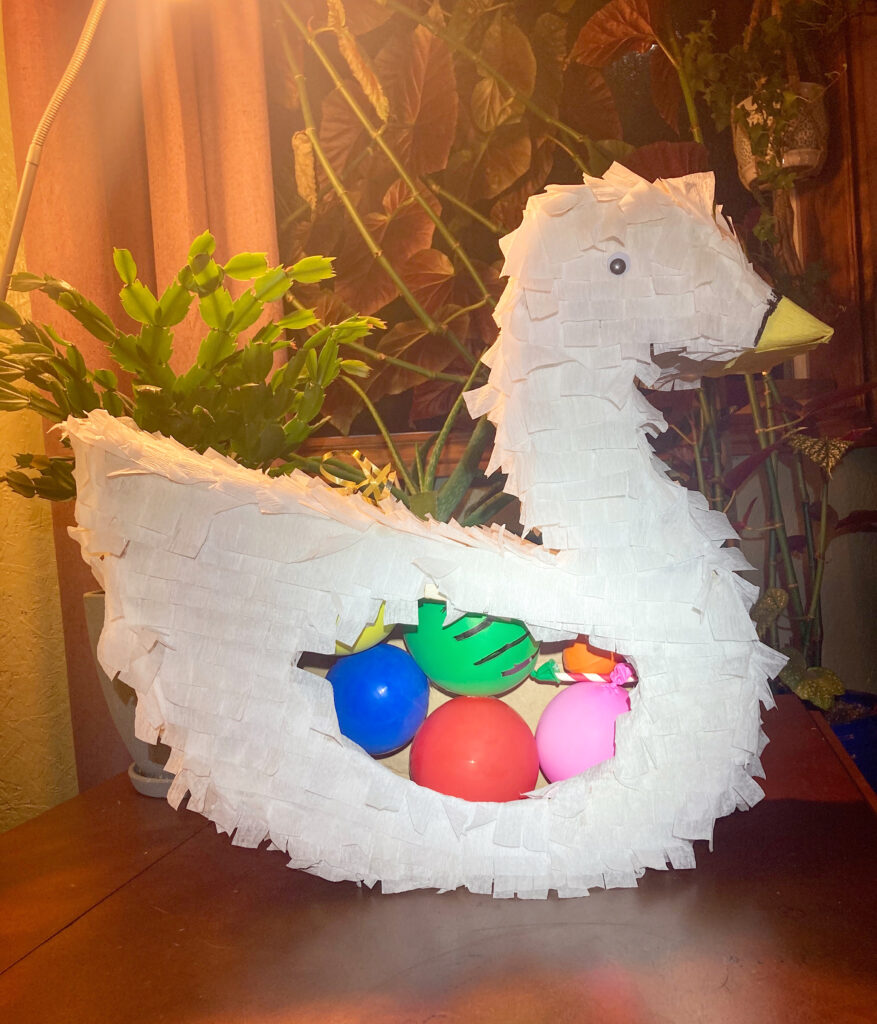

Fick’s law
In order to fully represent the variables maximized with Fick’s law, I chose to create a swan piñata. Avian respiratory systems have evolved to manipulate three of the five variables in Fick’s law in order to increase metabolic rates and maintain body mass scaling necessary for flight:
R=KA(P1-P2)/d
Avian systems are comprised of four pairs of sacs, a singular interclavicular sac, and parabronchial lungs (Fig. 2). Cross-current flow patterns work to maximize the pressure gradient (P1-P2). Inhaled gas goes through multiple exchanges before being exhaled, moving from the lungs to the air sacs and back to the lungs. My Swañata focuses on maximized gas exchange area A and minimal barrier thickness d (Fig.3). Multiple air sacs and the parabronchial setup maximize the surface area available to the independent respiratory organ. Minimal barrier thickness of the air/blood tissue area magnifies the effects of a maximized pressure gradient and surface area, [A(P1-P2)].

